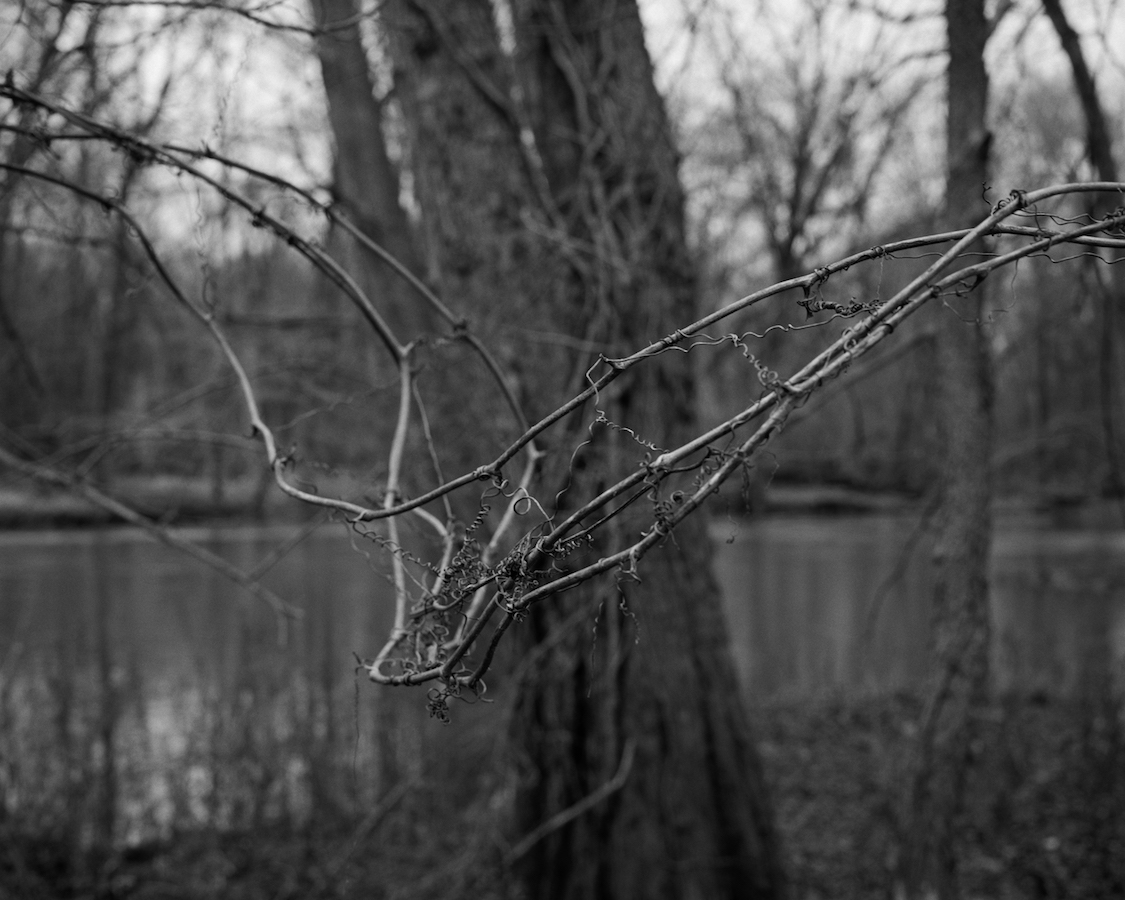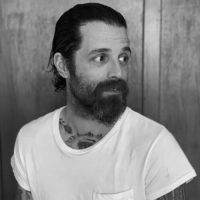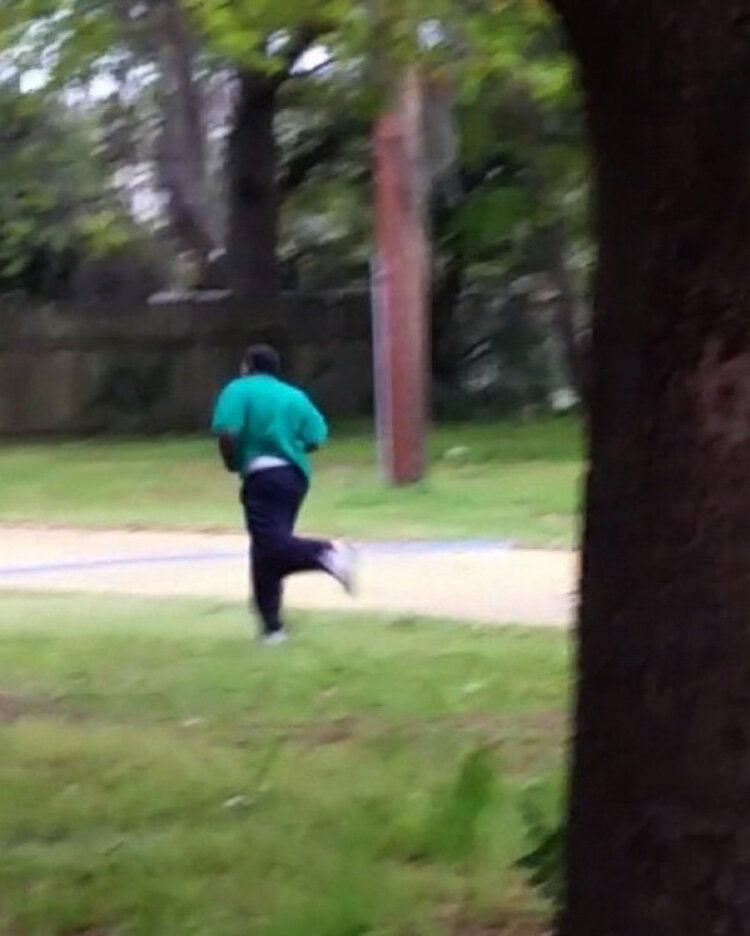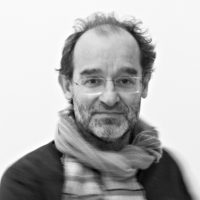Terri Weifenbach and Tim Carpenter are American artists whose work explores the themes of nature and the pastoral.
Episode 60: This was recorded in November of 2019. It feels like decades ago as I sit typing this in August 2020. Some episodes are released later than others for various reasons. There are still about three left from 2019 to process, so I hope the artists can forgive the processing time. For posterity, I will also be posting an interview with Tim that I did earlier this year about his work below.

IYD_01 Terri Weifenbach
Tim Carpenter and Terri Weifenbach are two of the most exceptional artists in the photography game at the moment. I knew of Terri’s work for some time and had come across Tim’s work over the course of the past couple of years and fell pretty hard for his work. Local Objects, which I purchased from Micamera in Milan is still a book that changed my perception of how to view small town life.
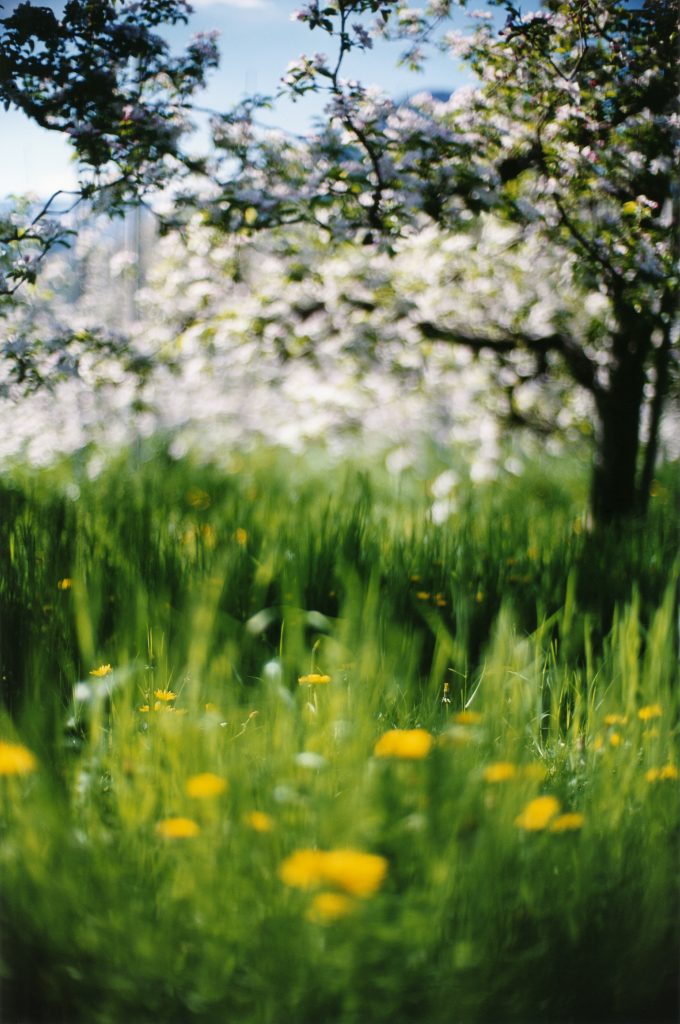
IYD_02 Terri Weifenbach
With Terri’s work, one of the things that often gets mentioned is the astounding beauty of her color and her ability to present a consistent vision that regards the phenomenon of the natural world with a blurred beauty that has become part of her signature. What gets mentioned less often is the idea that her photographs offer a deep psychologically charged space for the contemplation of something uncanny or surreal. The images that she crafts are of course beautiful, but underneath the initial surface read of the images lies a dreamy state in which white picket fences and roses blur into a hyperreal contention that suggests a parallel world to ours. I am reminded often of David Lynch’s Blue Velvet and the Cottingley Fairy photographs that Sir Conan Doyle wrote about when I peer in to her world.
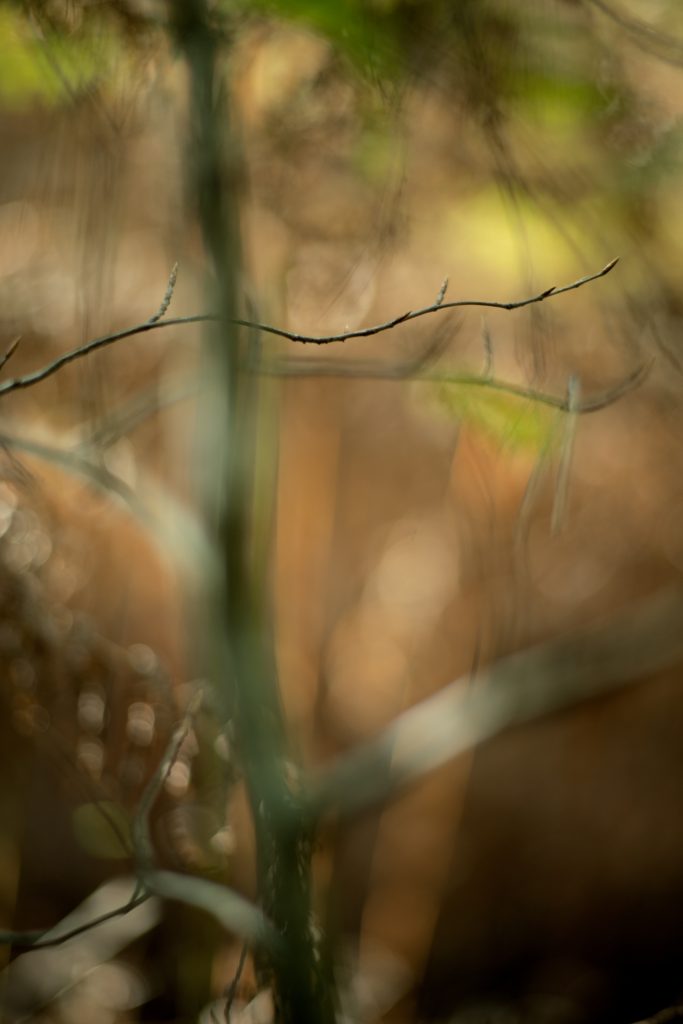
Cloud Physics_01 Terri Weifenbach
This conversation took place at MEP during Parisphoto and was the only recording in which the artists brought some beers with. We recorded this in a theater projection booth in mostly dark circumstances while clinking beer bottles. It was very relaxed and is one of my favorite conversations from the period. Both will be interviewed properly at some point in the future on their own time.
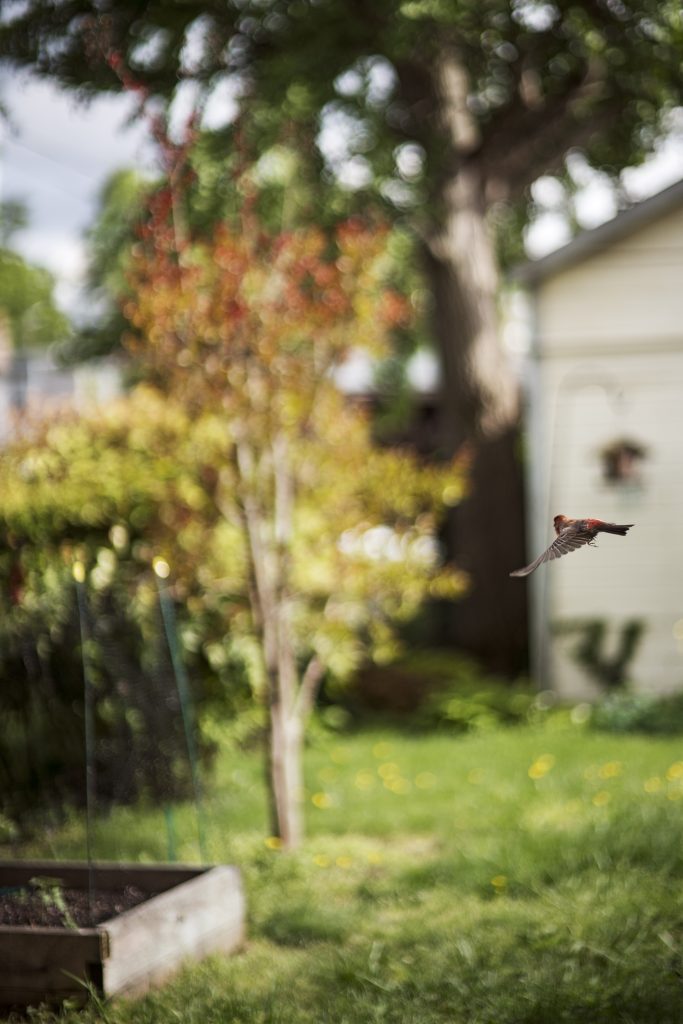
Des Oiseaux_01 Terri weifenbach
I want to give a huge shout out to these two for hooking up the beers, but also being great and inspirational!
Original Interview with Tim Carpenter on American Suburb X
This conversation took place over a year of emailing and should be read as informal. The intention was to talk about Tim’s work and views of art and photography in general. We began the conversation before his latest book Christmas Bay, Bucks Pond Road (The Ice Plant, 2019) was available. I thoroughly recommend you get this book and Local Objects if you can find a copy. Again, the dialogue is quite informal. I have just edited the final version that you see here and find my questions somewhat unstable or insufficient in the wake of Tim’s answers, but I am pretty sure it is still enjoyable. The illustrations come from Christmas Day, Bucks Pond Road.
On Dec 03, 2018, at 04:11 AM, Brad Feuerhelm wrote:
…So this is turning into an interesting interview or conversation I reckon…mind if we keep it going a bit? answer however you please.
——————————
BF: So, did you study with Joerg Colberg by chance? The Hartford program is quite dissimilar to anything I have seen. I might be wrong, but I think Susan Lipper may have been there as well. Robert and Joerg of course have ties to lots of the great masters of the European tradition. I think Hartford is also responsible for Bryan Schutmaat and possibly Matthew Genitempo whose work, though quite different from yours shares some of the sensibilities I find in your work, namely the monochrome formalism, but also a sense of rural investigation. Texas is quite a different place than the Midwest though.
TC: I did study with Joerg, but I was most heavily influenced by Robert Lyons (the program’s founder) and Mary Frey. Alec Soth, Justine Kurland, and Doug Dubois were all there as well, in more limited roles, and I learned much from all of them. We met once with Michael Schmidt while in Berlin – a real gift. My class included Bryan and J Carrier (“Elementary Calculus”), and the subsequent class had Morgan Ashcom (“Leviathan” and “What the Living Carry”), and there are many other great photographers who came out of there.
I feel like Bryan – and also Matthew to an extent – are more “exterior” or “social” photographers than I. Not to get too grandiose, but in American terms: they’re more in the expansive Whitman mode, and I tend more toward the Dickinson interiority. That’s not a hard and fast distinction, though, and we all move back and forth between those poles. Also, I perceive in Bryan (and others) some ideas about things like masculinity, socio-economics, the American West & etc. to which the photographer is looking to give form in pictures. As I’ll explain more, my primary goal is to use a camera not as a recorder of thought, but as the instrument of thought. Which is not to say that there’s not a lot in my head when I’m out making pictures, just that it’s something else.

BF: I would suggest that between recorder and instrument of thought, we have the awkward intentions of both. I sadly never got to meet Michael Schmidt, but his work is very important to me-Berlin nach 1945 being one of my top possessions, book-wise. As you are probably aware, there was quite a crossover between John Gossage and Schmidt, the New Topographics with Robert Adams, Lewis Baltz and the Werkstatt Für Fotografie and these artists and their images, though perhaps not overly direct, share some sensibilities with your work. Was this group influential for you at all?
TC: I had and admired “Berlin nach 45” before I went to Hartford, but it was upon meeting Schmidt and seeing more of his books that I was hooked. As I’ve said elsewhere, the ground shift for me was Gossage’s “The Pond,” which I’d seen here and there but not gotten my hands on until the Aperture 2010 re-release (just at the beginning of grad school). I’m certainly interested in the cross-fertilization between the Americans (including Robert Adams) and their German host. In some ways, it feels a bit like Picasso and Braque egging each other on.
BF: On that note, this idea about Americans and Germans responding to each other as post-war winners and losers is such a weird way to perceive the work and world events-its like you said about egging on, but also kind of a weird race to the bottom, the only caveat that with the California/Colorado school and the Berlin school, there is a massive disparity in gloom, even though some of Baltz’s work in particular is gloomy-I blame the sun!!!!
It’s strange I still do not own the Pond. I just haven’t gotten round to it yet and am deeply influenced by Gossage and his Berlin work in particular. I consider him one of the greatest living photographers still making excellent work, etc. It was Gossage who rejected my intention to use the ideas of psychogeography during our co-workshop in Berlin, which given The Pond etc is an interesting point of failure to my intention. He felt that topics were unnecessary, yet you cannot ignore his early Berlin work, nor the The Pond, which is somehow the epitome of psychogeographic work in the sense of losing oneself and letting automatic movement and perception determine what place actually is and how your body functions within it, politically or otherwise.
Wanderlust-another German idea like the French Flaneur is also part of the mobility of seeing/sight and it factors heavily into the roots of the medium. I think it gets overlooked as a method of production in contemporary terms. There is such a ridiculous division between who is making the art and who is being the photographer. The whole backwards (my word) idea of “conceptual practice” simply laments automatism as a passivity to allow the medium to exert the effort before the framework of conceptual conceits, somehow. If we do not photograph the white box and wrap a meaning of non-meaning around it, we cannot sell the two-dimensional picture of the box at the fair. I feel somehow like we are being dumbed down when we crutch this “conceptual” coinage. It should be fairly implicit.
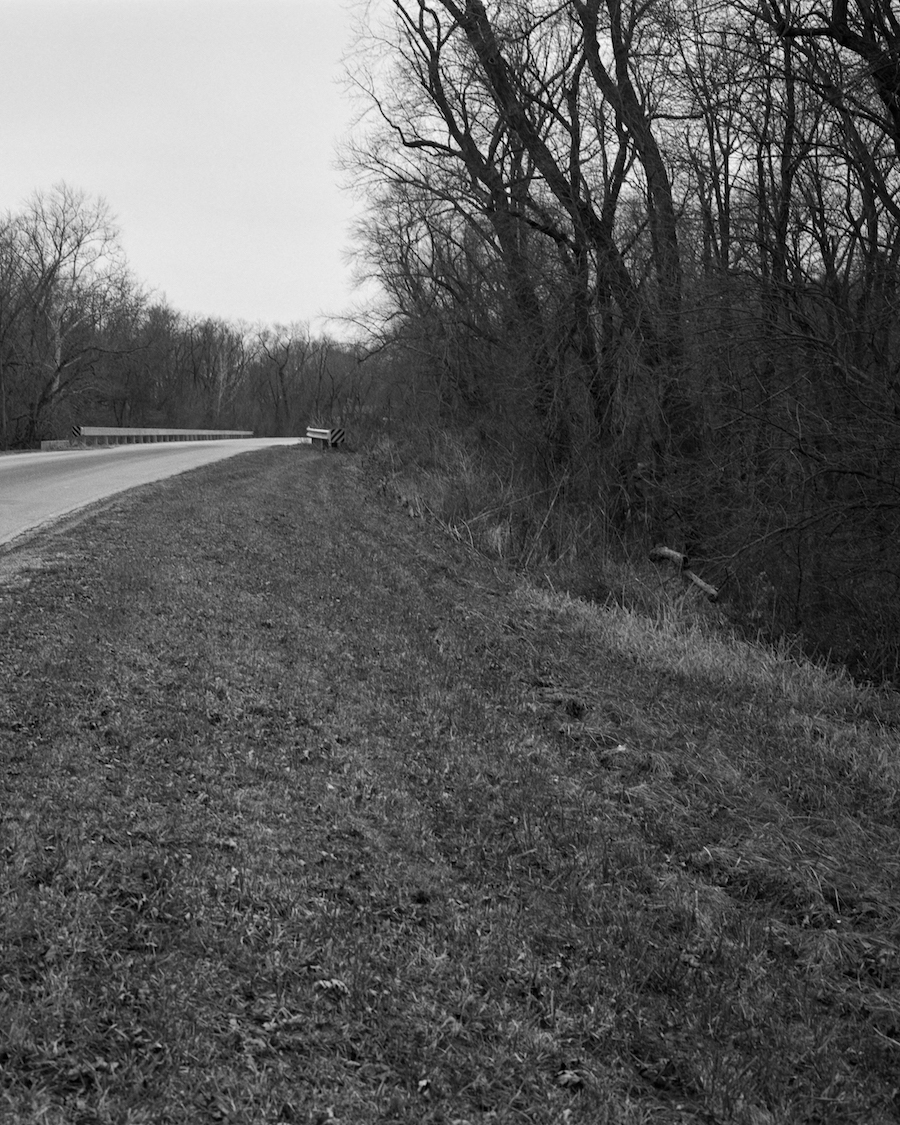
TC: Maybe just to plant a stake in the ground, I’d also say that topics are not necessary. Which doesn’t at all mean that one can’t have one; just that one needn’t. If I’m interpreting the psychogeography concept properly, I don’t see it as a “topic” but rather as one of many aspects of a separate and singular human being. I don’t think that it’s an insignificant detail that some pictures in The Pond were made in Germany: I see that work as site-based only if the site is within the self. Thus the pictures could be made elsewhere (though perhaps not just anywhere) once the basic formal approach was hit upon and developed.
As for the flaneur-like wandering, yes and amen: I do think photography is the medium of the walker. Here’s John from an interview/podcast I did with him: “With The Pond, I just thought that was no literary model for narrative landscape. There was no effective equivalent in writing. Landscape tended to be setting, in general. William Maxwell showed me a few literary examples of what I was trying to achieve, so it wasn’t unprecedented, but certainly not common. The idea was to reinforce the ordinariness of the pursuit. I would take a step off of the pavement. You leave the pavement, and then you go home. It’s all those little paths that kids have, the back way, the more interesting way to go.”
As for narrative, here’s where I might differ from him a bit. For me, narrative (whether linear or non-) requires some sort of distance or perspective, a remove of the maker from the made. (Woolf and Joyce and others have tried to collapse that distance.) But “The Pond” and many of John’s other books (and certainly his individual pictures) don’t seem to have that distance – they really feel like they’re happening in the moment of making, in the moment of seeing. Now of course the editing/sequencing/making of a book requires distance – but still one can work towards minimizing that.
I like the word incongruent because that’s the basis of my whole approach: the incongruency between the self and the world. More on that to come.
I feel like when a photographer leads the making of pictures with a politics or an ideology, those will ultimately be illustrated without fail. I always wonder when I see the political/ideological hot topic books on the ParisPhoto award list: did the make encounter anything that surprised her or him or might have changed their mind? Or that would have done so to his readers? We all know , for example, that agribusiness is bad and reproductive rights are important, and to me all that was required was to hit an easy target and assuage some liberal pieties (which, by the way, I share). When one seeks to illustrate ideas, there’s rarely (never? maybe.) any friction from the real world; nothing is transformed and nothing refuses to be transformed. I love this observation from Updike: “Works like ‘Madame Bovary’ and ‘Ulysses’ glow with the heat of resistance that the will to manipulate meets in banal, heavily actual subjects. Acquaintance, abhorrence, and the helpless love we give our own bodies join in these transmuted scenes of Dublin and Rouen; away from them, in works like ”Salammbo” and ”Finnegans Wake,” Flaubert and Joyce yield to their dreaming, dandyish selves and are swallowed by their hobbies.” I think many photographers yield to their dreaming, dandyish selves.

BF: Well, of course, this is also the plight of the flanneur whose means justify the experience of technological intrepidness with the camera, no? We are also heading towards the grand arc of mythologies or perhaps meta-narratives when we encounter the true horror of life’s banalities sequestered in works like Finnegan’s wake. The camera changes nothing. Photography changes nothing. It is simply a condition of perceived value and it is always in passing, so never allowed to ferment a certain way towards progress. It is in fact, the greatest of all living putrefactions that we eagerly digest…
I do believe what we are getting at with the collapsible distance between self and lets roughly say “subject” or even “narrative” is where the outside world meets the internal projection of our experiences that being placed upon it-and photographically speaking must always remain in the past due to fixity. These things, subjects or narratives (which is the rope around the neck of all of it) are found between these interior and exterior realms. The third realm of course is the audience, which you noted about the editorial value of a book.
In your Local Objects book, I find that what I am observing, and perhaps this is a large amount of projection being a Midwesterner myself and whose family homes look like they belong in your book, I can’t disassociate the feeling of forensic qualifications. I do not feel like you are simply taking photographs. I feel like you are treating place as evidentiary possibility…forensic as I mentioned and from there, I look at economics, industry as in the train and grain of your photographs in both Local Objects and the new book Still Feel Gone with Nathan Pearce and I conjure up an America I knew, though now Still and alarmingly so…and yet its not mine, it is only an equivalent thereof and it is no longer existing, but in the past.
TC: Right, it needn’t be intentional. But as I said earlier, I see politics as just another aspect of self, differing in degree among individuals, and differing within each individual from moment to moment. I am saddened by the current political situation, but I am saddened – and overjoyed – by very many things all at once. There’s a great flux going on within, as we learn, grow, forget, lose – a constant creation and de-creation of self – and an equally great flux going on without. We are constantly gauging the distance between self and world (which distance, for me, varies considerably but is ultimately unbridgeable). So, no, I’m not simply taking photographs; I’m calibrating the inside against the outside. And every once in a while, through constant shooting, I come upon a way of calibrating – a form – that seems true to both self and not-self. With “Local objects,” that was pretty specific: verticals with a lot of dead foreground. With “township,” [The book I did with Ray Meeks, Adrianna Ault and Brad Zellar] it was a de-centralized picture plane, somewhat jumbled. Now, in both of those cases, and in everything else I do, I make use of aspects of landscape and structures/things that are endemic to the place I’m from – but I think these are not amenable to the kind of the picture I want to make because they constitute good or interesting subject matter, but rather because they are inherent to the way I see the world (particularly the distance that the place allows) – which is why I’ll accept psychogeography as a part of what I do.

BF: I see failure and some sort of accidental dismissal of the grave nature of which they propose to shed light on between the interior and exterior as you have spoken about. I think its unfair in the world that we live in to engage with such projects under the misshapen guise of “change” or bringing the ideas or concepts within to the “art world” which is a stand-in for the neoliberal tendencies of capital, theoretical or other.
TC: Agreed, and particularly with your point about ultimately doing a disservice to the thing/situation on which they wish to shed light.
BF: How do we place our understanding of images then if not just formal? I agree with formal qualifications of picture-making being first, but I think to a large degree, everyone has those considerations when they frame the image, at least to some base respect. When one gets to speaking on “photographic seeing” what I am proposing is a way in which those attributes along with the rigour of what the subject may or may not be to an outside audience is endemic of the whole. Would you say that your work is simply formal or that there is an underlying pulse to your images?
TC: Dude, form IS the underlying pulse. We are form-making creatures; it’s the way we manage the chaos outside and are able to live moment by moment. We abstract from both inside and outside to create something in the middle, which is meaning. We are in a constant state of poesis – “the activity in which a person brings something into being that did not exist before.” This constant meaning-making could also be called “thinking.” Form-making IS thinking, the epistemological act. It’s also the calibration I was speaking of before. The problem is that the gap is unbridgeable and our desire for formal coherence is unquenchable. The longing for completion will never be satisfied.
When a person makes a thing that expresses the process of form-making, we have an aesthetic object. My belief is that the primary objective of a work of art is to communicate the ineffable from one idiosyncratic self to another. That which is effable – politics, economics, science &etc – can be adequately communicated outside of art. Which is to say that subject matter can be adequately communicated outside of art. So for me, the aesthetic object is to be judged a success or failure based on its formal ability to evoke cogency. Coherence. Beauty even.
Now, it is certainly true that the success of the work can be enhanced by deft use of subject matter that contributes to the content of the picture. (I try to be consistent in using “content” as the total offering a work – the combined effect of form and subject matter.) The brutal realities of pre-unification Berlin certainly enhance the pictures that Gossage and Schmidt made there, just as the upheaval of the wall’s destruction inform “89/90.” But in both cases, I maintain that subject matter is a means to an end, not the end itself.
In the case of Local Objects, I wanted it to work epistemologically in two ways: 1) the individual pictures place the protagonist in a specific relationship to the things around him, the local objects, in order to know himself in and through their recalcitrance. The “movement of the self in the rock,” as Wallace Stevens would have it. (I didn’t read his poem until after the book was complete; when I did it felt eerily apt for what I was getting at. The text is attached at the end.) I was hoping to get at the chasm between self and world, and the accompanying ache of incompleteness. More Stevens: “From this the poem springs: that we live in a place / That is not our own and, much more, not ourselves / And hard it is in spite of blazoned days.”
2) the sequence uses two kinds of repetition, one spatial, one temporal. Turns out that repetition is neurologically key to our formal meaning-making – if every impression were utterly brand-new, we’d have no way to grasp onto life. We need patterns (thank god for metaphor to help out on that) in order to think and live.
So, ultimately, I wanted to use specific form to convey form-making. Thinking to convey thought. That’s pretty much it.
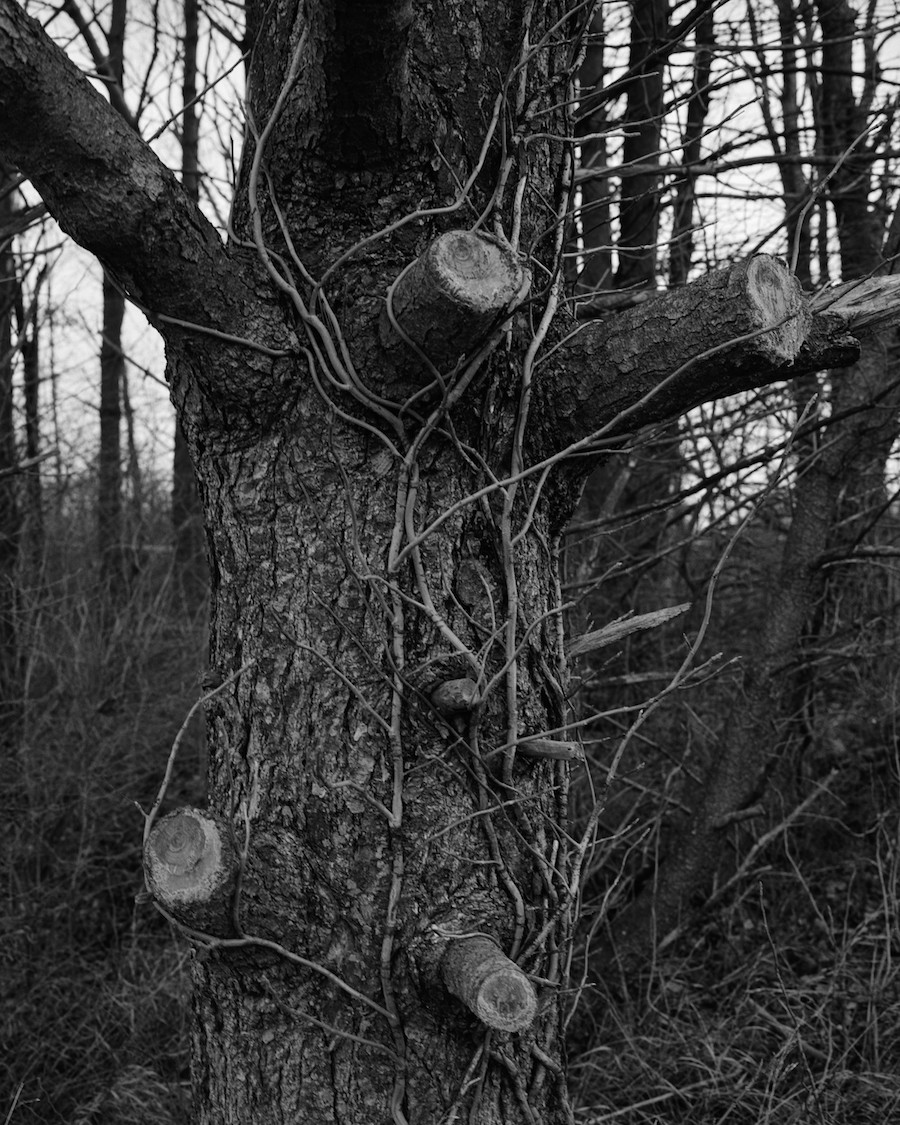
Local Objects / Wallace Stevens
He knew that he was a spirit without a foyer
And that, in his knowledge, local objects become
More precious than the most precious objects of home:
The local objects of a world without a foyer,
Without a remembered past, a present past,
Or a present future, hoped for in present hope,
Objects not present as a matter of course
On the dark side of the heavens or the bright,
In that sphere with so few objects of its own.
Little existed for him but the few things
For which a fresh name always occurred, as if
He wanted to make them, keep them from perishing,
The few things, the objects of insight, the integrations
Of feeling, the things that came of their own accord,
Because he desired without knowing quite what,
That were the moments of the classic, the beautiful.
These were that serene he had always been approaching
As toward an absolute foyer beyond romance.
BF: Ahhh I see sure, then we are getting concerned with metaphysical nature of images and the relation to self and routine/reality based on repetition. So in this way with the Local Objects, we consider form or rather the form of its form as an oracle of sorts for the investigation of self in place and time. I find myself sympathetic with that, but also questioning how we observe any sort of universal order or agreement about these things…we start wading into waters of chaos as we describe the subject/totem etc in front of us the “image-object” as a referent for reality and a self-reflexive tool, the mirror channel of interior self distributed in place, borrowed corroborated away from the annals of slipping time. It’s then that I have to examine you when I examine your book really….
TC: I think it gets murky when we use terms like “metaphysics,” which mean so many different things to different people. But if I can narrowly define the metaphysics of a picture as being the sum of its formal elements (how a picture means, rather than what it means), then I’m in territory that I can handle. It goes back to what I’ve said before: if art is “about” anything for me, it’s about the ineffable. It’s about the thing that can’t be articulated in some other way, and certainly not in straightforward prose.
And one thing I did actively with Local Objects was to remove (or reduce as much as possible) any subject matter with more obvious symbolic import. Like I’d actually photographed a dead snake or two. But that stuff had to come out, along with bicycles, signs, basketball hoops – any piece of subject matter that I felt worked too much on its own to create the meaning of the picture.
Because I wanted to get to time. But not to have subject matter as a referent for self; rather to use distance and depth of field and qualities of the printing &etc (in other words, the formal tools at our command as photographers) to get at how I was finding myself in relation to the world. Maybe that’s a variation on Eliot’s “objective correlative,” finding a “subjective correlative” through formal means.
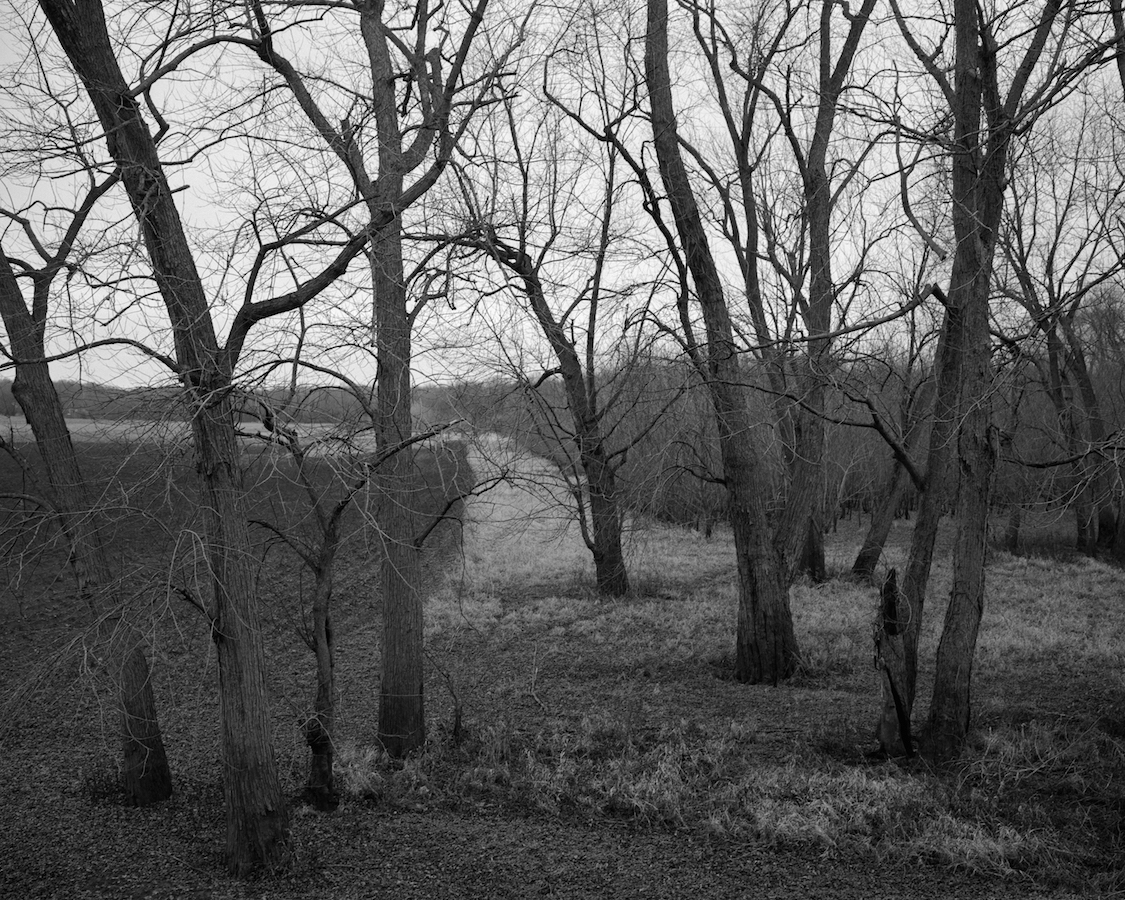
BF:I want to speak with you in practical terms about your book with Nathan Pearce. Setting aside our discussion on how reports work about self and form, how did you come to collaborations as a proxy of this mechanism. How did you begin the process and who came up with that book design in terms of how it is half/half, but can be read equally front to back and back to front…?
TC: Whew, I feel I’m on much firmer ground with this kind of question. I like the practical, very much. It’s maybe interesting to compare/contrast the two collaborations: Still feel gone with Nathan and township with Ray (and Adrianna Ault & Brad Zellar, as I’ll describe).
township came first, and took longer, so I’ll start there. Ray and I have been friends for a long time now, and we talk about a lot of things, both inside and out of picture making, and we look at each other’s pictures frequently. When he decided to reboot the collaborative Orchard Journal series and asked me to contribute, we started getting more specific. For my part, I was thinking a lot on a couple pieces of writing: Brad Zellar’s House of Coates and Cormac McCarthy’s Suttree. Both had protagonists that found themselves in perhaps less-than-desirable (though not quite dire) straits, despite some (subtly evidenced) book learning in their pasts. In my estimation: underachievers. I was thinking about what that meant, as how they might see the world, as how that was an aspect of myself as well. And these ideas felt like they needed to be Illinois winter pictures, whether or not they would eventually be part of the collaboration.
As we were talking through these and I was showing initial pictures, Ray and his partner Adrianna were making pictures in January in Ohio, of the auctioning off of her family’s farm. I was immediately drawn to them, because it crystalized one of my trains of thought: how to measure a person’s (my) life. An auction sort of does that in an objective way: here’s all you shit and here’s how much people will pay for it. So even though we didn’t make the pictures together in the same place, everything came together in a way that I found highly gratifying. And then Brad helped us with editing. He also contributed a wonderful short story that he had written before seeing any of the pictures, but which fit with – and elevated – them in a way I could have never expected. And there was one more layer of collaboration, as Ray worked with Carl Wooley and Nelson Chan (my partners in TIS books) to design and produce a book that feels really special.
With Still feel gone, it was a more of a thing where Nathan and I wanted to publish something together (we’re both Illinois guys) and all options were open, including using existing pictures. One thing I’ve really loved about the stuff Nathan makes is that it’s done relatively quickly, considered but not overly belaboured, and thus never too precious. We sent each other bunches of pictures, and I was really taken with a set that he had made while travelling on train from Illinois to points west. I had some “train” pictures too, but mine were made with a view camera looking down the rails at various points in my home county. So his were handheld, 35mm aspect ratio, with occasional motion blur, and mine were 4×5 on a tripod, and naturally more static. We didn’t know how exactly they’d work together, but I wanted to give it a shot because I liked the challenge of overcoming any “obvious” link in the subject matter as being the reason for the book. I was trying arrangements of PDFs when at some point Clint Woodside asked Nathan what he was up to. Clint was already a friend of mine as well, so we showed him the pictures, and he wanted to take it on and see what his imprint Deadbeat Club would do with it.
I’d thought of keeping the two bodies of work separate, but it was Clint who really elevated it far beyond what I’d envisioned (which was probably just a well-made zine if Nathan and I had done it alone). I let Clint edit and sequence my part of it, and was totally into his results; he also went for a much better print quality, which I’m grateful for.
I suppose the big commonality between the two books is that the gist of my more ego-centric work is in making the pictures and knowing that they do what I want them to do. Then I’m really wide open to what the collaborators bring to the whole, what the edit and sequence end up being, and how it’s produced. I actually feel really relieved to give up some control on those aspects to people whom I love and trust.
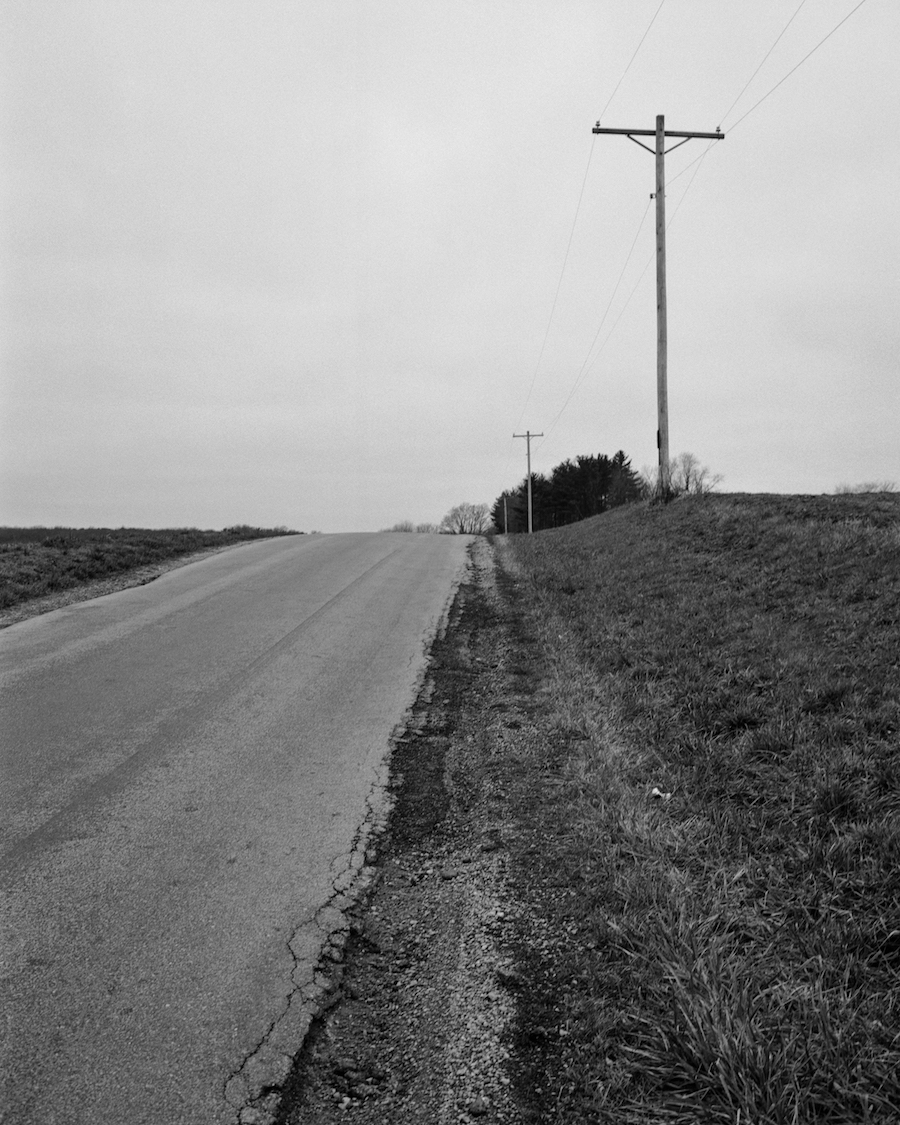
BF: I have been discussing the idea of what I describe as a “New Rurality” (I’m terrible for wanting to coin terms, but forever not wanting to be a write anything concrete about them b)…the new rurality that I have applied has its basic structure in the idea that cities like New York, London, Paris, etc. are becoming too expensive to work in. I believe we are looking at a great re-distribution of people from cities as automation takes hold and a new indentured servitude is created with wealthy elites and the property and space (verticality owned) in cities. They were once, New York and Paris Especially, places where art could be created on bohemian or impoverished “starving artist” grounds, but as the economy unfolds towards automation, purposeful trickle up of neoliberal policies, it seems like artist are returning, especially in America to the overlooked land and smaller pockets of rural life in which it is possible to own a home, create work and have that space that is now becoming impossible for the most part…how did you get back to making work in Illinois? You clearly still have a foot in New York, but what was or is the draw for Monticello etc? I get the sense that you may also disagree about intent and rurality, but…
TC: Ha. You’re right, I may disagree, but I also get your point. But I’ll answer the last part (the practical part) about how I got to working in Illinois, to lay the ground for answering the rest.
The MFA at the Hartford Art School is limited residency, so I was always living in Brooklyn while not travelling for classes (Connecticut in the summers; NYC, San Francisco, Berlin for fall and spring sessions). The pictures that got me into the program were all made on lengthy trips around the western US – pretty much derivative of Shore and some Sternfeld – so that’s what I showed to faculty and fellow classmates when I first arrived. But I also had a handful of more recent pictures made near Monticello, my home town in central Illinois, and they caught the interest of some of the folks, who encouraged me to make more. So I started making 2-3 week trips home just to photograph, which was also obviously a practical way to work, as I could stay at my parents’ place and mooch off of them while I got a second graduate degree. Also immensely important was – and still is, to this day – that my dad is a railfan, and he likes to drive for hours to take pictures of trains. I could/can tag along and make pictures in small towns and cities, and in forests and fields.
I also just walked around my home town a lot, and here I should note that my dad was in the Air Force, so although I was born in Monticello and all my extended family lived there, I didn’t grow up there. So I’m no outsider, but I’m also not deeply embedded in the community. I think that middle space has been good for me.
So anyway, I kept going to Illinois all through grad school, and when it was over, I decided not to go back to full-time employment, but rather keep freelancing in NYC as I’d been doing for the 2+ years of the program. And I also decided that I’d keep working in Illinois, mostly at that time because I felt I was just getting into a groove, but also because it remained imminently practical, and a great way to spend time with my parents and my sisters’ families, including some adored nieces and nephews.
What I came to realize was that it was really good for me to stop chasing subject matter as I did on those road trips and sort of remove that from the equation by experiencing the same subject matter over and over again. I talk about Wallace Stevens a lot, and specifically the idea that there’s a constant flux inside (the self) and an equally constant flux outside (all that’s not the self). The successful poem or song or picture is a fleeting connection between self and world. And it helped me immensely to calm that external flux in at least one way, by looking at the same streets and buildings and fields throughout the days and seasons and over the course of years. I really noticed when small things changed: a tree cut down, a house painted. But I also was made to focus more on the internal flux: what made me different on one day versus the next, or the next year. I (like every human being) was learning, forgetting, gaining, losing – or creating and de-creating as Stevens would have it, in the terminology he adopted from Simone Weil. And I started actively using that in how I made/make pictures.
Which sort of starts to answer your main question, and maybe also loops around to stuff we talked about earlier. I didn’t choose Illinois for economic reasons, or in conscious rejection of large cities (which, let me be clear: I not only adore NYC, but I need it to satisfy my desires for music, art, books, and theater. I’m not leaving any time soon, if ever.) I go there because it seems to be the best place to get at what I want to get at. If I could do that elsewhere or in multiple places, I probably would.
But I did originally go there for practical reasons, which have become even more clear over time: I am very relaxed away from NYC, I feel no pressure to make pictures on any given day, whether because it’s raining or I’m not in the mood, and – probably this is the central thing – I’m immensely inspired and motivated by being around the people I love and like the most. How do I say this exactly? I feel grateful for what I have been given, and I want to make the most of it.
I should also say that part of that practicality of making pictures in IL (perhaps repeating something I said earlier) is that the modest stuff of the rural Midwest is perfectly amenable to my desire to communicate. Back to Eliot: this place does offer a wealth of objective correlatives that suit my nature very well, although one could say that my favored houses and trees barely rise to the level of what he was talking about. But anyway: no mountains, no oceans, no tall buildings. There’s very little that would – as subject matter – overwhelm the picture, which again is perfectly to my needs, as I wish to gauge self against world and calibrate the smallest differences. For me, that requires calm and quiet, and that’s what I find in Illinois.
End dispatch.
